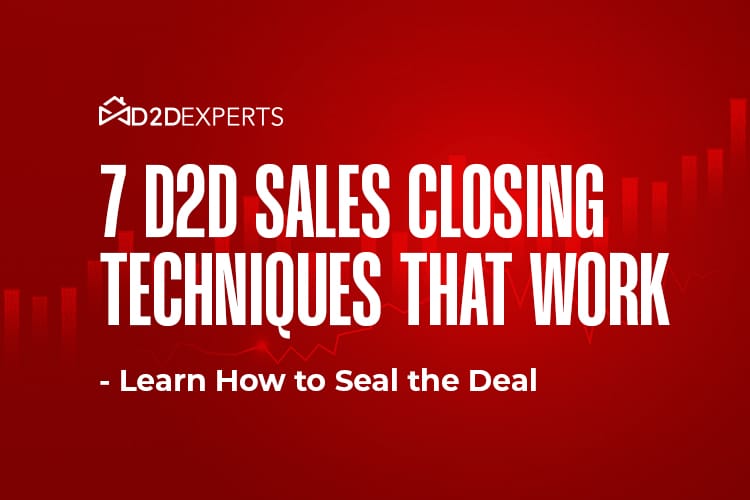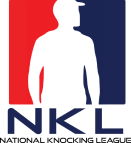You dream of closing like Jordan Belfort but face the reality of countless rejections, challenging clients, and unpredictable market dynamics.
Remember, every “no” is one step closer to a “yes.”
And with the right big league sales closing techniques, you can increase your chances of getting a “yes” with every interaction.
Are you incorporating the right sale closing techniques in your strategy?
Let’s discuss some of the best different types of sales closes that work in any situation and how you can learn them in a fun and effective way.
What is a Sales Closing Technique?
A sales closing technique is a strategy or tactic used to persuade your prospect to purchase your product or service. It can be a question, statement, suggestion, or action that moves the buyer from consideration to decision in their journey.
There are many closing strategies for sales depending on your product, prospect, or sales process. There is no one-size-fits-all: different approaches fit different sales scenarios. Some methods are assertive and direct, while others lean towards a consultative, subtle approach.
While some techniques excel in complex, long-haul sales processes, others shine in simple, short-term transactions.
The key is to choose the right sales closing technique for the right situation — and to use it at the right time.
You don’t want to come off as too pushy or too passive — or try to close too early or too late.
Your goal is to sound confident, respectful, and helpful.
Read Also “Direct Sales Lead Generation Strategy”
Top Sales Closing Techniques That Work
Here are some of the most popular and proven methods of closing a sale in various scenarios. We’ll explain what they are, how they work, and why they work — with tips to apply them effectively.
1. The Assumptive Close Sales Technique
The assumptive close centers on seamlessly guiding the prospect toward a purchase by operating under the assumption that they are already convinced. Instead of asking, “Do you want to buy this?” you transition directly to logistics questions, such as quantity, delivery date, or payment method. This approach capitalizes on psychological momentum and positions you as confident in your solution. When executed properly, it can subtly shift the prospect’s mindset from deliberation to commitment.
Why It Works
By presuming the sale, you remove a point of hesitation. Prospects feel a nudge toward action because they sense you believe in your product’s fit for their needs. Confidence can be contagious, and when you convey certainty, prospects often mirror that attitude (see Assumptive Close: How to Use It).
Examples
- “Would you like to receive the standard package or the premium package?”
- “Which billing cycle do you prefer—monthly or quarterly?”
- “Should we schedule implementation for next Monday or Tuesday?”
When to Use It
Ideal late in the conversation, once you have confirmed needs and objections. Ensure the prospect has shown positive buying signals—questions about features, budget confirmation, or timeline queries.
Pitfalls
- Premature Use: If you employ the assumptive close before gaining sufficient agreement, it can feel pushy or dismissive.
- Lack of Rapport: Without establishing trust, taking the sale for granted can backfire, making prospects feel unheard.
Best Practices
- Always listen for verbal or nonverbal cues that the prospect is ready to move forward.
- Maintain a conversational tone—avoid robotic or formulaic scripting.
2. The Now-or-Never Close Sales Technique
The now-or-never close leverages scarcity and urgency by presenting a limited-time incentive, compelling prospects to make a decision on the spot. This tactic often includes time-bound discounts, bonuses, or exclusive packages that expire quickly. The goal is to trigger prospects’ FOMO (fear of missing out) while highlighting the tangible benefits of acting immediately.
Why It Works
Scarcity drives urgency. When prospects believe an offer is fleeting or inventory is limited, they prioritize the decision to avoid regret. Studies consistently show that limited-time offers increase conversion rates because buyers don’t want to lose perceived value (learn more in Creating Urgency with Limited-Time Offers).
Examples
- “If you sign up by 5 PM today, we’ll include a free two-week premium support package.”
- “We’re down to our last 20 units at this price—once they’re gone, the price goes up.”
- “This promotion ends at midnight; after that, the bonus add-ons won’t be available.”
When to Use It
Best when you’ve already addressed objections and built rapport, and the prospect is on the fence about timing. Use it tactically—overuse can cause skepticism if every offer is labeled “limited.”
Pitfalls
Perceived Inauthenticity: If your “limited-time” offers recur too frequently, prospects may discount the urgency.
Ethical Concerns: Never fabricate scarcity. If you promise an expiration, make sure your team honors it.
Best Practices
- Pair with a clear, concise explanation of why the urgency exists (e.g., rising costs, limited production runs).
- Follow up immediately with a summary of total savings or added value.
- Reference real-time data if possible: “Inventory levels are at 12%—this price will expire when we cross 10%.”
3. The Summary Close Sales Technique
The summary close distills all prior conversation points into a concise recap, aligning product benefits with the prospect’s unique pain points. By highlighting how your solution addresses each need, you reinforce the value proposition and guide the prospect toward a logical decision.
- Why It Works: Prospects often juggle multiple considerations—features, costs, ROI, implementation timeline. The summary close synthesizes these elements into a coherent narrative, reducing cognitive load and reminding prospects of why they engaged initially (see Strategic Summaries to Seal Deals).
- Examples:
- “To recap, with our enterprise package, you’ll reduce your onboarding time by 40%, save 20% on maintenance costs, and have dedicated 24/7 support to prevent downtime.”
- “So in summary, our solution will streamline your lead nurturing process, integrate with your CRM seamlessly, and deliver a 30% increase in qualified appointments.”
- When to Use It: After addressing objections and confirming interest but before you ask for the final commitment. It’s especially effective if the prospect has multiple stakeholders and needs a clear, data-driven rationale.
- Pitfalls:
- Information Overload: Be selective. Overloading the summary with every feature can obscure key benefits.
- Relevance Mismatch: Make sure each point directly ties back to a pain point the prospect expressed. Irrelevant details can feel like filler.
- Best Practices:
- Incorporate quantitative metrics whenever possible (e.g., percentage improvements, cost savings).
- Use bullet points for clarity and readability.
- End the summary with a direct question: “Given these benefits, which implementation date works for you?”
4. The Question Close Sales Technique
The question close prompts action by asking a question that presumes agreement or invites next steps. It’s a gentle nudge that respects the prospect’s agency, encouraging them to verbalize their commitment or surface lingering concerns.
- Why It Works: By framing the close as a question, you shift the dynamic from salesperson-led to prospect-led. This approach can uncover hidden objections and fosters an atmosphere of collaboration (explore more at Effective Question-Based Closing).
- Examples:
- “Do you feel comfortable moving forward with our recommended solution?”
- “What date works best to start implementation?”
- “Are there any remaining questions before we finalize the agreement?”
- When to Use It: Ideal when you sense hesitation but haven’t pinpointed the exact objection. It encourages transparency, allowing the prospect to voice issues you may not have detected.
- Pitfalls:
- Too Vague: If your question isn’t specific enough, the prospect might respond with a generic “We’ll think about it,” which stalls the process.
- Pressure Perception: In some cultures or industries, direct questions about commitment can feel too forward. Gauge your audience before opting for this method.
- Best Practices:
- Follow up answers immediately with solutions—if they express concerns, address them on the spot.
- Use open-ended variations to explore objections: “What would it take for you to feel ready to move forward?”
- Combine with the Testimonial Close if the prospect hesitates, showing how others overcame similar concerns.
5. The Sharp Angle Close Sales Technique
The sharp angle involves conceding to a prospect’s request—such as a discount, added service, or extended warranty—but only if they commit immediately. It’s a form of conditional reciprocity: you give a concession, they give the sale.
- Why It Works: This technique leverages the principle of reciprocity: when you offer something extra, prospects feel compelled to reciprocate with a commitment (read more at Mastering Conditional Concessions). At the same time, stating the condition (“if you sign today…”) reinforces urgency.
- Examples:
- Prospect: “Can you extend the support period?” Salesperson: “Absolutely, we can add six months of complimentary support if we finalize the order by end of day.”
- Prospect: “Can you reduce the price by 10%?” Salesperson: “Yes, we can offer that discount if we process your payment today.”
- When to Use It: When prospects ask for concessions and you want to protect your profit margins. It’s particularly useful in negotiations where prospects feel they need some incentive to close.
- Pitfalls:
- Giving Too Much: If you concede too much, you may erode perceived value. Track concession thresholds beforehand.
- Condition Confusion: Be crystal clear on the condition. Ambiguity can lead to disputes later.
- Best Practices:
- Have predefined concession limits. Know what you can and cannot offer without managerial approval.
- Phrase the condition transparently: “Our standard package is $X, but if we process today, I can include…”
- Use documented approvals for larger concessions to maintain consistency across your team.
6. The Takeaway Close Sales Technique
The takeaway close relies on reverse psychology. By suggesting that the product or offer might not suit the prospect, you create a scarcity mindset and challenge their desire to own the solution. It shifts power dynamics, making the prospect feel they’re at risk of losing something valuable.
Why It Works: When you imply the deal might be withdrawn, prospects often react by trying to demonstrate fit or commitment. This technique appeals to ego and the innate desire to fill perceived gaps (discover more in The Psychology Behind Takeaway Closes).
Examples:
- “I understand if this doesn’t align with your goals. We can revisit when you’re ready, but I wouldn’t want you to invest in something that isn’t a perfect fit.”
- “It seems like you might be looking for a different solution. Let me know if you need anything else, and we can explore options later.”
- When to Use It: Use this when the prospect has shown strong initial interest but hesitated on final commitment. It’s a last-ditch effort to provoke a response when traditional closes stall.
- Pitfalls:
- Offending the Prospect: If you’re too blunt—“Maybe you’re not the right client for us”—it can alienate them.
- Overuse: Frequent use across multiple prospects can erode trust and make you appear disingenuous.
- Best Practices:
- Maintain a tone of genuine concern: frame the takeaway close around their best interests, not solely your desire to close.
- Observe subtle signals: if a prospect reacts defensively, dial back and pivot to a more collaborative approach.
- Pair with a follow-up: if the prospect doesn’t bite, schedule a check-in call, reinforcing your willingness to help.
7. The Testimonial Close Sales Technique
The testimonial close harnesses the power of social proof. By sharing authentic success stories or relevant case studies, you alleviate prospects’ reservations and showcase tangible outcomes. Prospects see themselves in your existing customers, making it easier to envision success.
- Why It Works: People trust peer recommendations more than direct claims from salespeople. Testimonials act as unbiased validation, reducing perceived risk and strengthening credibility (see Leveraging Customer Stories for Closing).
- Examples:
- “Our client, Alex Martinez from XYZ Corp., saw a 65% increase in conversion rates within three months of using our platform—just like what we discussed for your team.”
- “Jane Doe, a regional manager in your industry, found that our solution cut her administrative tasks by 70%. Here’s a brief video she recorded about her experience.”
- When to Use It: Effective when a prospect cites industry-specific challenges or doubts ROI. Tailor the testimonial to mirror their use case—similar size, industry, or pain points.
- Pitfalls:
- Generic Testimonials: If testimonials aren’t directly relevant, they may feel staged. Always choose stories that resonate with the prospect’s situation.
- Overreliance: While powerful, testimonials should supplement—not replace—personalized selling and needs analysis.
- Best Practices:
- Incorporate multimedia: short video testimonials or linked case studies boost authenticity (e.g., Case Study: Boosting Sales).
- Keep testimonials current; outdated reviews (over two years old) may lose impact.
- Obtain permission for sharing direct quotes or metrics; compliance builds trust.
8. The Urgency or Scarcity Close
The urgency or scarcity close leverages the fear of missing out by emphasizing limited timeframes or constrained availability. By positioning your offer as fleeting or exclusive, you compel prospects to act quickly rather than delay the decision. This method works best when you can back up your claims with real data—whether it’s low inventory levels, impending price increases, or a special promotion ending soon.
- Why It Works: Scarcity taps into the psychological principle of loss aversion—people are more motivated to avoid missing out than to gain an equivalent benefit. When you frame your offer as something that might not be there later, it heightens the prospect’s sense of urgency and can push them toward a faster decision (see Creating Genuine Scarcity).
- Examples:
- “We only have 10 units left at this price point. Once they’re gone, the price goes up next week.”
- “This promotion ends tonight at midnight—after that, the bonus features are no longer included.”
- “Due to rising production costs next quarter, our rates will increase by 8%. If you lock in today, you avoid that adjustment.”
- When to Use It: After you’ve already established value and addressed objections. Introduce scarcity or urgency only when the prospect has shown genuine interest but is hesitating on timing.
- Pitfalls:
- Overused Scarcity: If every offer is labeled “limited,” prospects will stop trusting your urgency claims.
- Fabricated Deadlines: Never invent artificial time constraints—if you promise a deadline, you must honor it to maintain credibility.
- Best Practices:
- Use concrete metrics: “Only five seats remain for our next training session.”
- Explain the reason for urgency: “Suppliers have informed us raw materials are back-ordered, so this batch is our last at current rates.”
- Combine with a summary of benefits: Remind the prospect why acting now locks in value and ROI.
9. The Direct Close
The direct close is straightforward: you explicitly ask for the sale without surrounding it with elaborate setups or conditions. It’s a no-nonsense approach that works best when you’ve already built rapport, confirmed need, and eliminated objections.
By cutting to the chase, you respect the prospect’s time and demonstrate confidence in your solution.
- Why It Works: Some prospects appreciate brevity and honesty—there’s no guesswork about your intentions, and it puts the ball squarely in their court. This directness can be especially effective with decision-makers who prefer clear, concise dialogue rather than back-and-forth negotiations (learn more at When Directness Matters).
- Examples:
- “Are you ready to move forward with this order today?”
- “Shall I prepare the agreement for signing?”
- “Do you want to place this order now so we can meet your target launch date?”
- When to Use It: Ideal toward the end of a conversation where you have clear verbal or written cues indicating readiness—questions about delivery dates, budget confirmations, or feature clarifications.
- Pitfalls:
- Misreading Cues: If the prospect still has unvoiced objections, a direct close can feel abrupt or off-putting.
- Cultural Sensitivity: In some industries or regions, being too direct can be seen as aggressive. Gauge your prospect’s communication style first.
- Best Practices:
- Preface with a brief recap: “We’ve covered how this solution solves X and fits your budget. So, shall we move forward?”
- Look for buying signals: nods, questions about payment, or requests for paperwork.
- Maintain a confident but respectful tone—don’t sound desperate or coercive.
10. The Alternative Choice Close
The alternative choice closely guides prospects by offering limited options, all leading to the next step—essentially giving them control while still steering the conversation toward a sale. Instead of asking a yes-or-no question, you present two or more choices that assume a positive answer.
Why It Works: By framing the decision as picking between options rather than a binary buy-or-not, you reduce the psychological friction of saying “no.” The prospect feels empowered to choose, even though both choices move toward a close (see Crafting Smart Choices).
Examples:
- “Would you like to go with the standard package or upgrade to premium with extra support?”
- “Should we schedule training this week or next week?”
- “Would you prefer a quarterly or annual billing cycle?”
- When to Use It: When prospects have already signaled interest but might be stuck on details. Offering choices helps them move past indecision by focusing on logistics rather than the principle of buying.
- Pitfalls:
- Too Many Options: Offering more than two or three can overwhelm and paralyze decision-making.
- Irrelevant Choices: Make sure each option you present adds clear value—don’t offer choices just for the sake of it.
Best Practices
- Clearly delineate the differences: “Option A includes X, Y, Z; Option B includes X, Y, Z, plus A.”
- Follow up quickly after they choose to confirm next steps and maintain momentum.
Understanding Psychological Principles Behind Effective Closing
A deep understanding of buyer psychology is foundational to any successful closing strategy. When you tap into what drives decisions—emotions, biases, motivations—you can tailor your approach to resonate at a deeper level. Building trust and rapport lays the groundwork, while handling objections positively ensures you address concerns before they fester.
- Loss Aversion: Buyers feel the pain of losing more than the pleasure of gaining. Highlighting what they risk by not acting can be more persuasive than emphasizing gains.
- Social Proof: People look to peers for validation. Demonstrating that others like them succeeded with your solution reduces perceived risk (read more at Buyer Decision Triggers).
- Building Trust and Rapport
- Active Listening: Rephrase what the prospect says to show you truly understand their needs. This fosters psychological safety.
- Consistent Follow-Through: If you promise a demo link or a follow-up call, deliver on time—this reliability cements credibility.
- Handling Objections Positively:
- Validate Concerns: Acknowledge the prospect’s hesitation: “I hear you—budget is tight this quarter.”
- Provide Evidence: Use data, testimonials, or case studies to counter objections objectively.
4 Tips for Improving Your Closing Rate
1- Active Listening Skills
- Repeat back key points: “So, you’re most concerned about integration with your existing CRM?”
- Ask open-ended questions to cover deeper motivations: “What would an ideal solution look like for you?”
- Pay close attention to both verbal and nonverbal cues—tone of voice, pacing, body language.
2- Personalizing Your Approach
- Tailor benefits to each prospect’s unique pain points rather than using a one-size-fits-all pitch.
- Reference previous conversations or company-specific challenges: “Last time we spoke, you mentioned X—our solution addresses that by…”
- Use their name and company details naturally to reinforce that you’re not delivering a generic message.
3- Timing Your Close
- Strike when interest peaks—look for cues like budget-related questions or discussions about timelines.
- Avoid “closing fatigue”: if the prospect seems overwhelmed, pause and pivot to addressing smaller concerns before pushing again.
- Align your timing with external factors—end-of-quarter budgets, product launch dates—to capitalize on urgency.
4- Follow-Up Strategies
- Send a concise summary email immediately after calls, recapping pain points, proposed solutions, and next steps.
- Use multi-channel follow-ups: combine phone calls, emails, and even social media touchpoints to stay top of mind.
- Provide valuable content, like whitepapers or case studies, in between touches to reinforce your expertise without explicitly pushing for a sale (explore more at Closing Tips and Tricks).
Common Mistakes to Avoid in Closing Sales
Pressuring the Buyer
- Avoid high-pressure tactics—prospects who feel coerced often back away or seek alternative vendors.
- Recognize when to give space: if there’s hesitation, ask if they’d like time to review or if there’s additional information you can provide.
Ignoring Objections
- Don’t dismiss concerns as trivial; they often mask deeper anxieties.
- Always address objections head-on with empathy and evidence—unresolved objections can derail deals later.
Rushing the Process
- Avoid jumping to a close before fully understanding the prospect’s needs.
- Build rapport first—if you rush organically, you risk losing trust and credibility.
Mastering Sales Closing Techniques Effectively
Mastering the art of closing sales requires a blend of psychological insight, strategic flexibility, and genuine empathy. By understanding the nuances behind each closing technique—whether it’s injecting urgency, offering choices, or simply asking directly—you can guide prospects toward decisions that benefit both parties.
When it comes to learning how to apply these in your sales process, the D2D Sales Performance training is your golden ticket.
FAQs
Why Choose the D2D Sales Performance Bootcamp?
The sales performance bootcamp is an intensive, hands-on training program designed to turn you into a sales superstar. You’ll learn from the best, practice in real-world scenarios, and network with fellow sales enthusiasts.
You’ll benefit from:
Job placement assistance with companies valuing your talent
Expert coaching with practical tips and best practices
Realistic, challenging sales scenarios with immediate feedback
Networking opportunities with ambitious salespeople and recruiters
What is the ABC method of sales?
It stands for “Always Be Closing” — a mindset to consistently move prospects toward a decision in every interaction.
Are closing techniques manipulative?
Not if used ethically. They guide decisions, not force them. It’s about helping, not pressuring.
I knocked doors since I was 11! Never bought into the whole hourly normal job, and used direct sales to be the vehicle to create MASSIVE success. I Started the Direct Sales division for Solcius as their VP building it up to have 70+ sales reps nation wide. In 2018 I left to pursue a greater mission to unify and uplevel the Door to Door industry and founded the D2D Experts.
























